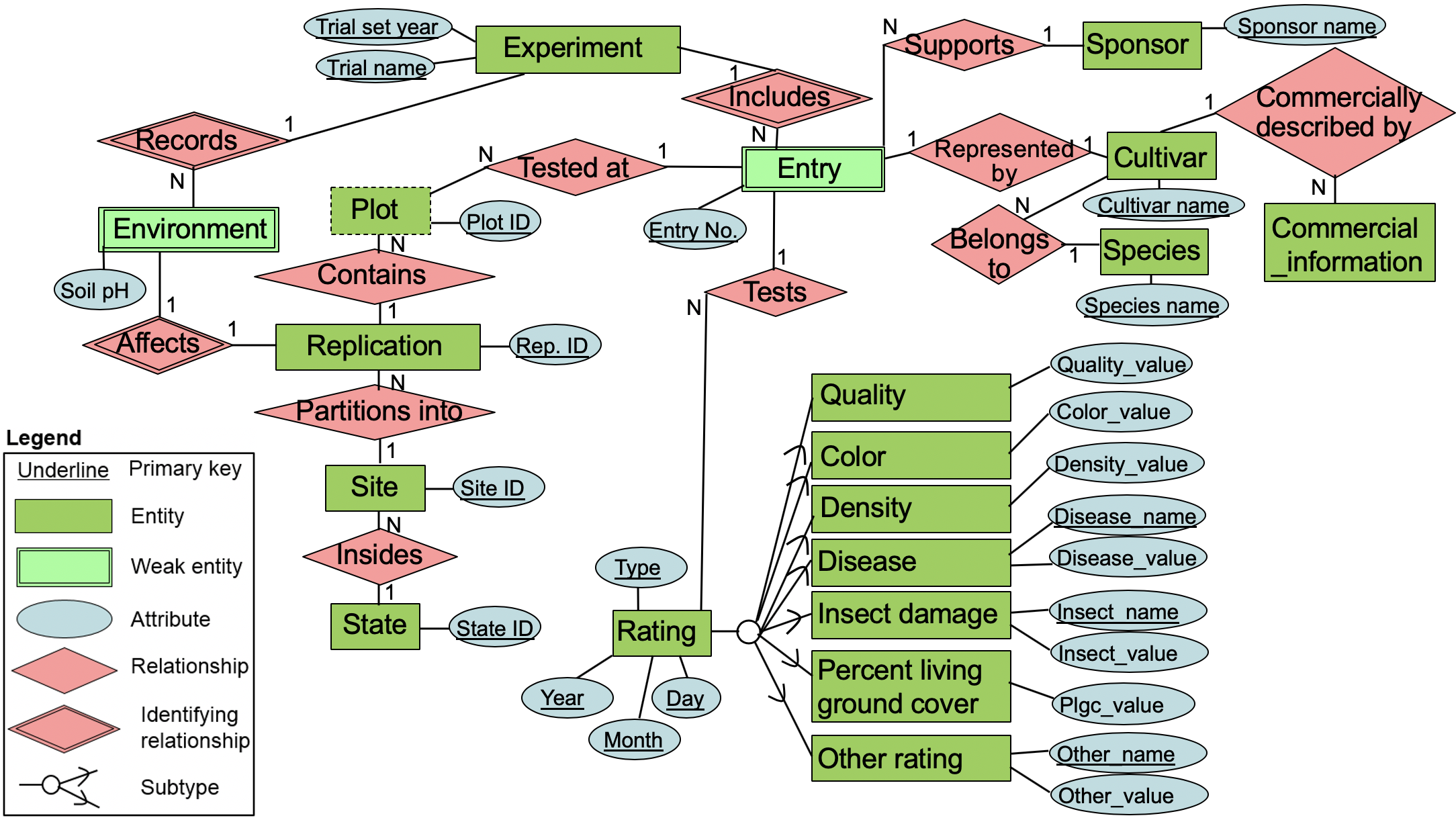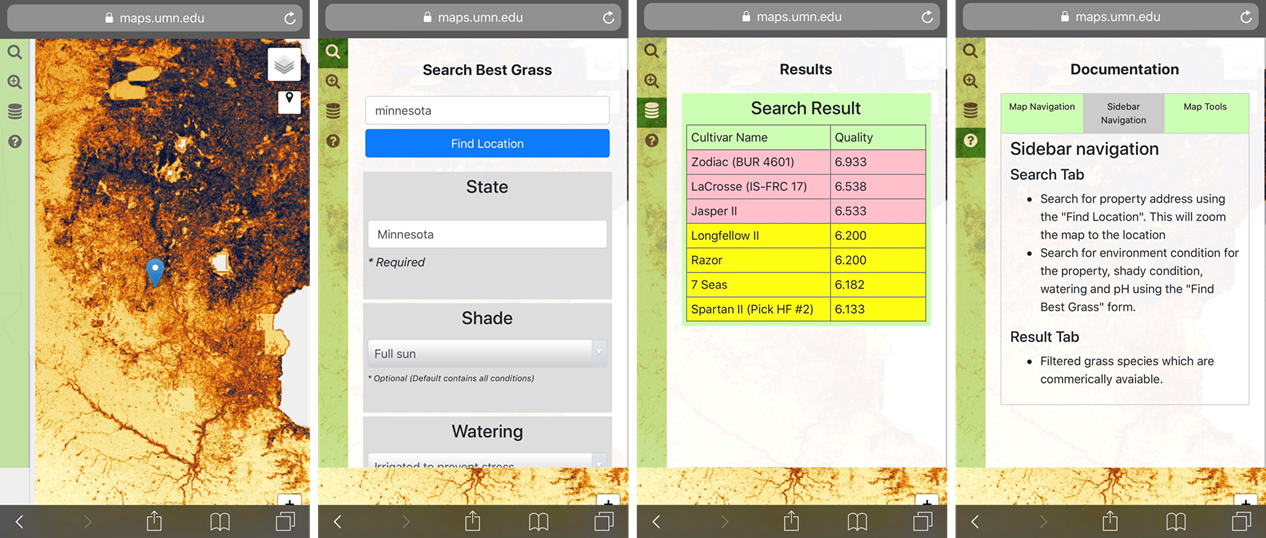By Yiqun Xie, Majid Farhadloo, Shashi Shekhar, and Len Kne; University of Minnesota
Suppose you have to choose a turfgrass for your lawn. How would you shop for grass seed suitable for your lawn? Would you like to have convenient search and recommendation facilities similar to those available for buying consumer products at e-commerce sites such as amazon.com?
Today, consumers get little information for deciding which grasses to purchase for their lawns despite the long existence of NTEP data [1]. Since the 1980s, the National Turfgrass Evaluation Program (NTEP) has collected large volumes of field-experiment data containing invaluable information about the performance and characteristics of turfgrass cultivars under a variety of conditions (e.g., climate). Searching for suitable cultivars through the current NTEP website (www.ntep.org) can be daunting even for simple “recommendation” queries (e.g., which cultivar has the highest average quality rating in Minnesota in the past 10 years?), which are of primary interest to consumers [2]. Overall, finding answers to such simple queries is difficult with the current NTEP website requiring dozens of clicks to gather summary reports followed by manual merging and filtering. In addition, consumers may be overwhelmed with technical terms and jargon.
To address these limitations, our interdisciplinary team collaborated with NTEP to design and develop (1) an NTEP database for simplifying search and queries, as well as (2) a user-friendly web-application to make it easy and quick for users such as consumers and researchers to extract desired information in various formats from NTEP data [3, 4]. The conceptual design of the new NTEP database [3,4] uses an Entity-Relationship model as shown in Figure 1, which allows flexibility in answering a wide range of queries such as the following:
- Homeowners: Which cultivar with low maintenance needs will work the best for my lawn?
- Retailers: Which cultivars should be stocked for sale in my local area?
- Turfgrass managers: Which cultivars have the best potential at my site (e.g., golf course)?
The Entity-Relationship model also improves data quality with documentation and database-based enforcement of constraints (e.g., a cultivar can only belong to one species). Furthermore, it provides extensibility towards future database enrichment (e.g., adding new properties for field tests). The new database was implemented using a relational database management system with the SQL query language and spatial libraries [5,6]. It was tested via sanity checks against existing summary reports from the NTEP website, and inspection of new query results by turfgrass researchers. It showed that the new NTEP database is able to answer the queries correctly and efficiently (reducing dozens of clicks needed to answer a query to a few). Next, the database was demonstrated to project team members at the Increasing Low-Input Turfgrass Adoption Through Breeding, Innovation, and Public Education 2019 project meeting and made available to team members for alpha and beta testing.
To improve the homeowner experience, our U-Spatial collaborators added a graphical web-application to reduce the jargon and user effort to get seed recommendations. For example, users can get turfgrass recommendations (e.g., a cultivar with the highest quality rating) by specifying a few simple criteria (e.g., location, amount of shade). To reduce user effort, the system can auto-fill many properties such as location and number of hours of sunshine based on smartphone location and existing solar maps as shown in Figure 2. The recommendations are based on the information contained in the NTEP database. Once a fully functional web app is complete, a homeowner could simply pull out a smartphone and get a turfgrass cultivar recommendation while standing on their lawn.
Resources for Further Exploration
- C. Yue, J. Wang, E. Watkins, S. Bonos, K. Nelson, J. Murphy, W. Meyer, W. and B. Horgan, Consumer Preferences for Information Sources of Turfgrass Products and Lawn Care. Agronomy Journal, 109: 1726-1733, 2017. doi:10.2134/agronj2016.05.0310
- C. Yue, J. Wang, E. Watkins,Y. Xie, S. Shekhar, S. Bonos, A. Patton, K. Morris, and K. Moncada. User preferences for accessing publically available turfgrass cultivar performance data. HortTechnology, 29(5), pp.599-610, 2019.
- Y. Xie, M. Farhadloo, N. Guo, S. Shekhar, E. Watkins, L. Kne, H. Bao, A. Patton and K. Morris. NTEP-DB 1.0: A Relational Database for the National Turfgrass Evaluation Program. To be submitted.
- Report on information delivery: An NTEP database (Slide-set) at 2019 annual meeting of the Increasing Low-Input Turfgrass Adoption Through Breeding, Innovation, and Public Education project, 2019. http://www.spatial.cs.umn.edu/NTEP/ntep_2019_summer_print.pdf
- S. Shekhar and P. Vold. Chapter 5: Spatial Databases. In: Spatial Computing, The MIT Press Essential Knowledge series, MIT Press, Feb. 2020.
- S. Shekhar and S. Chawla, Spatial Databases: A Tour, Prentice Hall, 2003.

